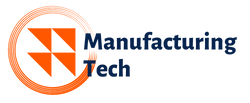
As the decades have rolled by, the manufacturing industry has undergone tremendous growth and technological innovation. These advances in technology have always resulted in more efficient ways to make products at scale. As a result, modern factories have continued to find new ways to implement these tools to help automate manual tasks and improve efficiency on the production line.
This trend toward automation has been further accelerated by the growing skills gap within the manufacturing industry, with businesses struggling to find ways to fill roles within their operations. According to McKinsey, manufacturing is projected to be one of the industries most impacted by automation, with greater than 64% of global manufacturing activities considered to be automatable.
As the focus on automation continues to increase, so too does the concern from the workers currently manning the production lines. As businesses look to implement technologies to help reduce labor costs and increase profitability, workers must constantly be trained on more complex tasks, or potentially risk being automated out of their job.
Ultimately, manufacturers are increasingly recognizing the importance of striking the right balance between technology and human workers. Instead of replacing employees, manufacturers are finding ways to leverage technology to improve employee productivity and safety, while finding ways to focus human activity on more complex tasks that machines and robots are unable to complete.
In this post, we’re going to take a more comprehensive look at manufacturing process automation, the debate between automation and worker augmentation, and how automating certain business practices can benefit your operations.
What is process automation in manufacturing?
In manufacturing, process automation is the use of technology to automate manual, repeatable tasks historically performed by humans.
Automation within a manufacturing facility can look vastly different than other industries, incorporating a wide variety of machines and robots to assemble products as they flow through the operations.
In this scenario, automation will often include not only the process of conducting the task itself, but also eliminating the need for human input when it comes to data entry.
How automation is used in production facilities
Automation can come in a number of different forms, and there are countless use cases where automation can be used to improve manufacturing systems and processes. Some examples include:
Order processing: As the business matures, companies might find it more challenging to handle a large volume of incoming orders. Automating order processing allows businesses to keep track of new orders, order modifications, and price calculations – all in real-time.
Procurement: This is a repetitive process that ties up considerable valuable human resources. However, businesses can automate the procurement process by using supplier portals and tools like vendor management systems.
This frees up employees, enabling managers to redirect workers to more cognitively intensive tasks.
Production: Manual production assembly is generally the most common use case for automation in the manufacturing industry. Businesses will use mechanical automation to improve the production process on the factory floor by implementing a combination of machines, robots, IoT devices, and software to guide workers, collect data, and physically carry out day-to-day tasks.
For instance, robots are becoming more and more common within manufacturing facilities and can be calibrated to carry out a wide range of individual tasks.
Additionally, manufacturers will often use production automation software to improve operator workflow on the production line and collect real-time data. This data can be used to identify the source of inefficiencies within a production process, allowing supervisors to issue corrective actions and drive continuous improvement.
Supply chain: The supply chain comprises several repetitive and error-prone processes that can cause bottlenecks in the entire system. However, employing automation methods eliminates errors during picking, receiving, stocking, and shipping.
Automated supply chain management lends itself well to production routing, resulting in more optimized workflow and production efficiency.
The benefits of automating manufacturing processes
In the age of connected industrial equipment and devices, it’s more challenging for businesses to rely on manual manufacturing processes. Instead, manufacturing businesses are relying on digital tools to manage the production operation, resulting in several benefits. These include:
Informed decision-making: By using Industrial IoT devices, businesses are able to automate data collection to capture key insights from day-to-day production activities including operator productivity, takt time, and more.
This enables supervisors to identify opportunities for improvement across the operations, enabling a culture of continuous improvement.
Better resource deployment and utilization: Many manufacturing processes are manual, requiring a significant amount of human input even for simple, menial tasks. This greatly increases the chances of errors, putting the business at risk for quality defects and compliance shortcomings.
Automating these basic human-based activities enables workers to focus on more complex, meaningful work that is not well-suited for automation.
Optimized shop-floor production processes: Automated systems provide clear insight into the prevailing production situation, revealing weak points and potential bottlenecks on the production line.
In addition, they provide potential solutions to such problems, creating more optimized production workflows.
Improved product quality: Automated, mechanized production processes are more adept at executing repetitive tasks, making them better at manufacturing consistently high-quality products. As a result, the BBC reports that robots are expected to replace up to 20 million factory jobs globally by 2030.
Furthermore, automated quality control methods can identify and eliminate damaged or subpar products before they are distributed to the end consumer.
Accurate and consistent documentation management: Manual data collection and paper-based document management are rife with errors and inconsistencies. Automated document management systems are more precise and accurate, enabling more robust data integrity and security.
Lower production costs and increased productivity: The benefits associated with manufacturing process automation boil down to lower production costs and increased operational efficiency.
At the end of the day, process automation allows for better resource deployment and less waste. This results in a significant improvement in workplace safety, workflow optimization, and increased profitability.
Automation vs. augmentation
As we discussed at the beginning of this post, we recognize that there are a number of situations where automating production processes is either not possible or not practical for a variety of reasons. In these scenarios, manufacturers should turn to worker augmentation as a way to improve the efficiency of a given process or activity.
With Tulip, manufacturers are able to help automate a significant amount of the non-value-added work that takes place on a daily basis within a manufacturing facility. Tulip helps to guide operators through manual assemblies, preventing human error from taking place.
As the worker is being guided through their workflow, Tulip is able to automate data collection, keeping track of every data point that happens from start to finish. This allows businesses to digitize their production records, ensuring a consistent, accurate audit trail is kept and eliminating the source of compliance headaches.
We recognize that humans will always have a place in manufacturing, but we take pride in ensuring that businesses are able to maximize operator output and focus their resources on the work that matters most.








